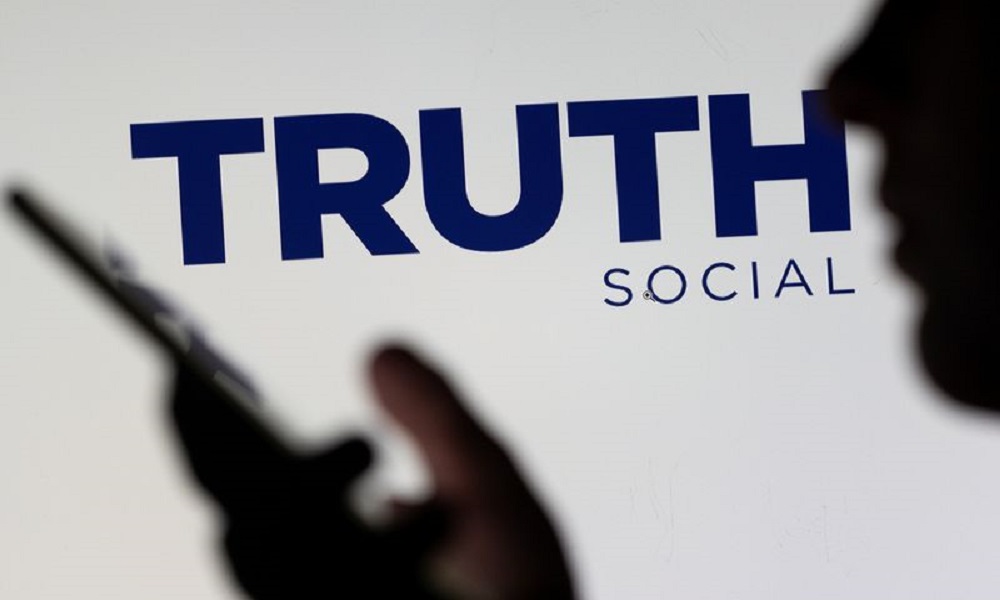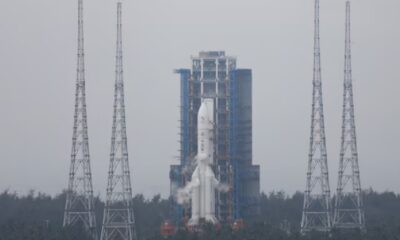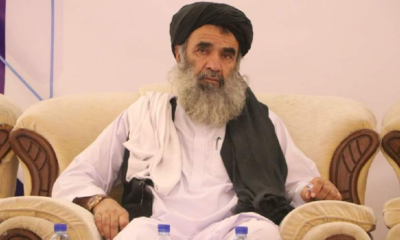Science & Technology
Trump social media deal can’t close on time, needs extension, buyer says

Digital World Acquisition Corp (DWAC.O), the blank-check company taking former U.S. President Donald Trump’s Truth Social app public, on Friday announced a special meeting of shareholders to approve an extension to the cut-off date to complete the merger, Reuters reported Saturday.
“While we are using our best efforts to complete the Business Combination as soon as practicable, our board of directors believes that there will not be sufficient time before the Termination Date to complete the Business Combination,” Digital World said in a SEC filing.
The termination date to complete the merger is Sept. 8, 2022. Digital World is seeking to extend the date by 12 months.
The announcement comes amid probes by U.S. regulators over the proposed merger.
Digital World said in June its board of directors had received subpoenas from a Federal grand jury in the Southern District of New York, while the U.S. Securities and Exchange Commision and the Financial Industry Regulatory Authority had also made requests for additional information on the deal.
Trump Media & Technology Group Corp, the creator of Truth Social, in October agreed to merge with Digital World and was expecting the deal to close by the second half of this year.
Science & Technology
China’s Chang’e-6 probe lifts off from far side of moon

China’s Chang’e-6 probe has lifted off from the far side of the moon, starting its journey back towards Earth, China’s national space agency announced on Tuesday.
The probe’s successful departure from the moon means China is closer to becoming the first country to return samples from the far side of the moon, which permanently faces away from Earth, Reuters reported.
The probe, which departed the moon at 7:38 am local time (2338 GMT) successfully completed its sample collection from June 2-3.
China’s National Space Administration (CNSA) said in a statement that Chang’e-6 “withstood the test of high temperature on the far side of the moon”.
Compared with its predecessor Chang’e-5, which retrieved samples from the near side of the moon, Chang’e-6 faced an additional technical challenge of operating without direct communications with ground stations on Earth, according to CNSA.
Instead, the probe relied on relay satellite Queqiao-2, put into orbit in April, for communications.
The probe used a drill and robotic arm to dig up soil on and below the moon’s surface, according to state news agency Xinhua.
Chang’e-6 displayed China’s national flag for the first time on the far side of moon after sample acquisition, Beijing Daily said.
The probe is now in lunar orbit and will join up with another spacecraft in orbit, CNSA said on Tuesday morning.
The samples will then be transferred to a return module, which will fly back to Earth, with a landing in China’s Inner Mongolia region expected around June 25.
The return of the lunar samples to Earth is being followed by scientists around the world, who hope the soil collected by the Chang’e-6 can help answer questions about the origins of the solar system.
Science & Technology
Japanese billionaire Maezawa cancels moon flyby mission

Japanese billionaire Yusaku Maezawa cancelled his “dearMoon” mission, which the project said would have been the first private flight around the moon, the mission announced on Saturday.
The team had originally aimed to make the circumlunar flight with celebrities on board by the end of last year but that became “unfeasible”, the mission said in a statement on its website, Reuters reported.
“Without clear schedule certainty in the near-term, it is with a heavy heart that Maezawa made the unavoidable decision to cancel the project,” it said. “To all who have supported this project and looked forward to this endeavor, we sincerely appreciate it and apologize for this outcome.”
In a separate post on the mission website, Maezawa suggested the cause of the cancellation was uncertainty over the project development, saying he signed the contract in 2018 based on the assumption the launch would come by the end of 2023.
“It’s a developmental project so it is what it is, but it is still uncertain as to when Starship can launch,” Maezawa said.
“I can’t plan my future in this situation, and I feel terrible making the crew members wait longer, hence the difficult decision to cancel at this point in time.”
Elon Musk’s SpaceX named Maezawa, the colourful founder of Japanese online fashion store Zozo Inc (3092.T) its first private passenger in 2018.
Three years later he was the first private passenger to visit the International Space Station in more than a decade, launching on a Soyuz rocket.
In 2022, Maezawa announced that K-pop star TOP and DJ Steve Aoki would be among the eight crew members he planned to take on the dearMoon mission.
In November he said the flyby mission would be delayed until this year or later.
Science & Technology
TikTok to label AI-generated content from OpenAI and elsewhere

TikTok plans to start labelling images and video uploaded to its video-sharing service that have been generated using artificial intelligence, it said on Thursday, using a digital watermark known as Content Credentials, Reuters reported.
Researchers have expressed concern that AI-generated content could be used to interfere with U.S. elections this fall, and TikTok was already among a group of 20 tech companies that earlier this year signed an accord pledging to fight it.
The company already labels AI-generated content made with tools inside the app, but the latest move would apply a label to videos and images generated outside of the service.
“We also have policies that prohibit realistic AI that is not labeled, so if realistic AI (generated contents) appears on the platform, then we will remove it as violating our community guidelines,” Adam Presser, head of operations and trust and safety at TikTok, said in an interview.
The Content Credentials technology was spearheaded by the Coalition for Content Provenance and Authenticity, a group co-founded by Adobe (ADBE.O), opens new tab, Microsoft (MSFT.O), opens new tab and others, but is open for other companies to use, read the report.
It has already been adopted by the likes of ChatGPT creator OpenAI.
YouTube, owned by Alphabet’s (GOOGL.O), opens new tab Google, and Meta Platforms (META.O), opens new tab, which owns Instagram and Facebook, have also said they plan to use Content Credentials.
For the system to work, both the maker of the generative AI tool used to make content and the platform used to distribute the contents must both agree to use the industry standard.
When a person uses OpenAI’s Dall-E tool to generate an image, for example, OpenAI attaches a watermark to the resulting image and adds data to the file that can later indicate whether it has been tampered with, Reuters reported.
If that marked image is then uploaded to TikTok, it will be automatically labeled as AI-generated.
TikTok, which is owned by China’s ByteDance, has 170 million users in the U.S., which recently passed a law requiring ByteDance to divest TikTok or face a ban. TikTok and ByteDance have sued to block the law, arguing it violates the First Amendment.
-

 Sport4 days ago
Sport4 days agoAfghanistan thrash Uganda by 125 runs at T20 World Cup
-

 Latest News5 days ago
Latest News5 days agoKazakhstan removes IEA from list of terrorist organizations
-

 Business5 days ago
Business5 days agoFirst Afghan trucks enter Pakistan on temporary entry permits
-

 Sport5 days ago
Sport5 days agoRashid to take ‘one game at a time’ ahead of T20 World Cup opening match against Uganda
-

 Sport4 days ago
Sport4 days agoCity Medical Complex Kabul Premier League 2024 gets underway
-

 Sport3 days ago
Sport3 days agoDefending T20 World Cup champions England washed out after Scotland scare
-

 Science & Technology4 days ago
Science & Technology4 days agoChina’s Chang’e-6 probe lifts off from far side of moon
-

 Latest News4 days ago
Latest News4 days agoTajikistan claims risk of radicalism from Afghanistan increasing
























